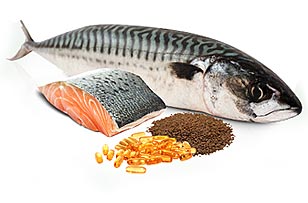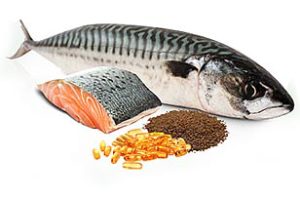What are omega-3 fatty acids Benefits? Omega 3 Fatty Acids Definition, Foods, and Benefits
updated 5/1/2003
The definition of Omega-3 is an unsaturated fatty acid that influences several biological pathways. Omega-3 fatty acids are essential Omega-3 fatty acids are found in foods, such as fish and flaxseed, and in dietary supplements, such as fish oil. This article will discuss the foods high in omega 3, and the benefits.
The two main omega-3 fatty acids are eicosapentaenoic acid (EPA), and docosahexaenoic acid (DHA). DHA and EPA are found in fish and other seafood. The third one is ALA, but it is derived from plant oils. I don’t recommend taking ALA.
ALA is an essential fatty acid, meaning that your body can’t make it, so you must get it from the foods and beverages you consume. Your body can convert some ALA into EPA and then to DHA, but only in very small amounts. Therefore, getting EPA and DHA from foods (and dietary supplements if you take them) is the only practical way to increase levels of these omega-3 fatty acids in your body.
Omega-3s are important components of the membranes that surround each cell in your body. DHA levels are especially high in the retina (eye), brain, and sperm cells. Omega-3s also provide calories to give your body energy and have many functions in your heart, blood vessels, lungs, immune system, and endocrine system (the network of hormone-producing glands).
Uses of Omega-3 Fatty Acids
Experts have not established recommended amounts of omega-3 fatty acids, except for ALA. Average daily recommended amounts for ALA are listed below in grams (g). The amount you need depends on your age and sex.
| Life Stage | Recommended Amount of ALA |
|---|---|
| Birth to 12 months* | 0.5 g |
| Children 1–3 years | 0.7 g |
| Children 4–8 years | 0.9 g |
| Boys 9–13 years | 1.2 g |
| Girls 9–13 years | 1.0 g |
| Teen boys 14–18 years | 1.6 g |
| Teen girls 14–18 years | 1.1 g |
| Men | 1.6 g |
| Women | 1.1 g |
| Pregnant teens and women | 1.4 g |
| Breastfeeding teens and women | 1.3 g |
*As total omega-3. All other values are for ALA alone.
What Foods Provide Omega 3 Fatty Acids?
Omega-3 are found naturally in some foods and are added to some fortified foods. You can get adequate amounts of omega-3s by eating a variety of foods, including the following:
- Fish and other seafood (especially cold-water fatty fish, such as salmon, mackerel, tuna, herring, and sardines)
- Nuts and seeds (such as flaxseed, chia seeds, and black walnuts)
- Plant oils (such as flaxseed oil, soybean oil, and canola oil)
- Fortified foods (such as certain brands of eggs, yogurt, juices, milk, soy beverages, and infant formulas)
What kinds of omega-3 fatty acids dietary supplements available?
Omega-3 dietary supplements include fish oil, krill oil, cod liver oil, and algal oil (a vegetarian source that comes from algae). They provide a wide range of doses and forms of omega-3.
Then human body requires Omega-3 fatty acids. When there are deficiencies, it affects almost every body system.
Omega-3 deficiency has been implicated in some psychiatric disorders such as bipolar disease, schizophrenia, and attention deficit disorders. Studies have shown that people with this deficiency have a greater risk of developing coronary artery disease and heart failure. Fish oil also decreases bad cholesterol, lowers blood pressure, and helps with an irregular heartbeat.
Omega-3 fatty acids are powerful anti-inflammatory agents. They help prevent the sun from causing damage to the skin. A deficient also will cause dry, scaly skin. Omega-3 reduced lesions on the skin and wrinkles. The skin needs to remain hydrated in order to keep the pores intact.
What are Some Effects of Omega-3 Acids on Health?
Scientists are studying omega-3 to understand how they affect health. People who eat fish and other seafood have a lower risk of several chronic diseases. But it is not clear whether these health benefits come from simply eating these foods or from the omega-3 in these foods.
Fatty Fish List of Omega-3 Fatty Acids
- Shad
- Sardines
- Whitefish
- Salmon
- Carp
- Butterfish
- Mackeral
- Anchovies
Skeletal Muscle Benefits
When athletes took Omega-3, there was an increase in skeletal muscle performance. Six months of supplementation resulted in an increased muscle mass and strength. There was also a decrease in inflammation.
The muscle recovery was also improved.
Heart Health Benefits
There is evidence that Omega-3 helps reduce heart disease. Fish oil reduces cholesterol and increases HDL, the good cholesterol.
What has been your experience with Omega-3 and fish oil? Do you like fish? Drop a comment!



Phyllis I thought canola oil was not healthy! D/T gmo and herbicides!
Canola oil is not a good oil!. Hi Manja!